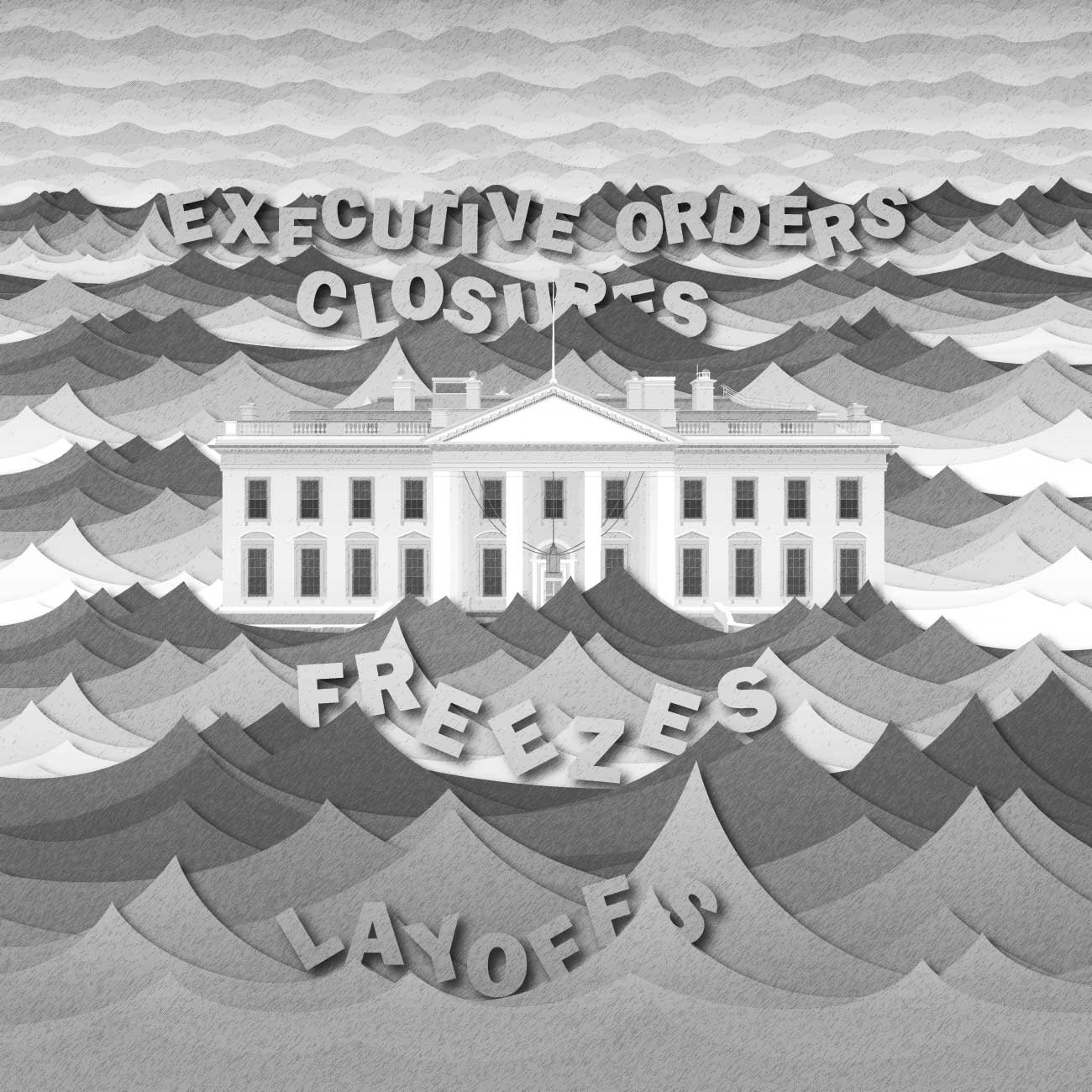
Executive orders, mass layoffs, freezes on federal grants, the closure of federal agencies, and more. In just a month, the Trump administration has come roaring out of the gates with a breathtaking flurry of activity that has raised significant questions about the scope of presidential authority and the balance of power in the federal government.
While not altogether surprising – President Trump ran for office on the promise to upend the status quo – the speed and scale of the onslaught has been alarming and disruptive. Some would argue that is, in part, the point. Whatever one feels about the actions of the administration, though, it’s important to parse out what we know and what we don’t yet know about their impacts.
Presidents have broad power and discretion to set policy and direct the actions of the federal government. One way they do this is through executive orders (EOs), written directives to manage the operations of executive branch agencies. EOs have the force of law and have been used by every president to put their own stamp on the government. They have been used for lofty purposes, such as Abraham Lincoln’s Emancipation Proclamation (1863) or Harry Truman’s order to desegregate the military (1948). EOs have also been used for purposes that, in retrospect, were deeply disgraceful, such as Franklin Roosevelt’s order to intern Japanese Americans during World War II (1942).
President Trump’s EOs and other orders from the administration cover a broad range of topics, including eliminating diversity, equity, inclusion, and accessibility programs in the federal government, curtailing immigration, rolling back transgender rights, and reducing funding for medical research. A complete list can be found in the Federal Register.
Whatever their intent, however, EOs are not boundless decrees that permit a president to override the Constitution or Congress. Our government has historically had a system of checks and balances, which include action by Congress and judicial review, to prevent presidential overreach. Whether these checks and balances hold in this moment remains to be seen. Dozens of lawsuits have been filed and judges have blocked some of the administration’s actions. For now.
We don’t know the ultimate outcome of these cases. The processing system for federal grants and other funding remains in turmoil, with some organizations receiving promised funds and others still locked out.
Organizations that are members of trade groups or professional associations can look to those bodies for guidance and updates. Many federal employees are members of unions that are pushing back on the layoffs and other employment changes. Resources that help explain the scope and limits of EOs and how to respond include these from the Congressional Research Service, American Civil Liberties Union, Alliance for Justice, and the National Council of Nonprofits. Those interested in tracking legal challenges to Trump administration actions can find information on the Just Security website.
Even in these uncertain waters, we remain committed to our mission and core values. The vision we share with our many grantees and partners – of a future where Missourians from all backgrounds have a fair and just opportunity to live their healthiest lives – is unwavering. As we navigate our way forward together, please prioritize taking care of yourselves and each other.



